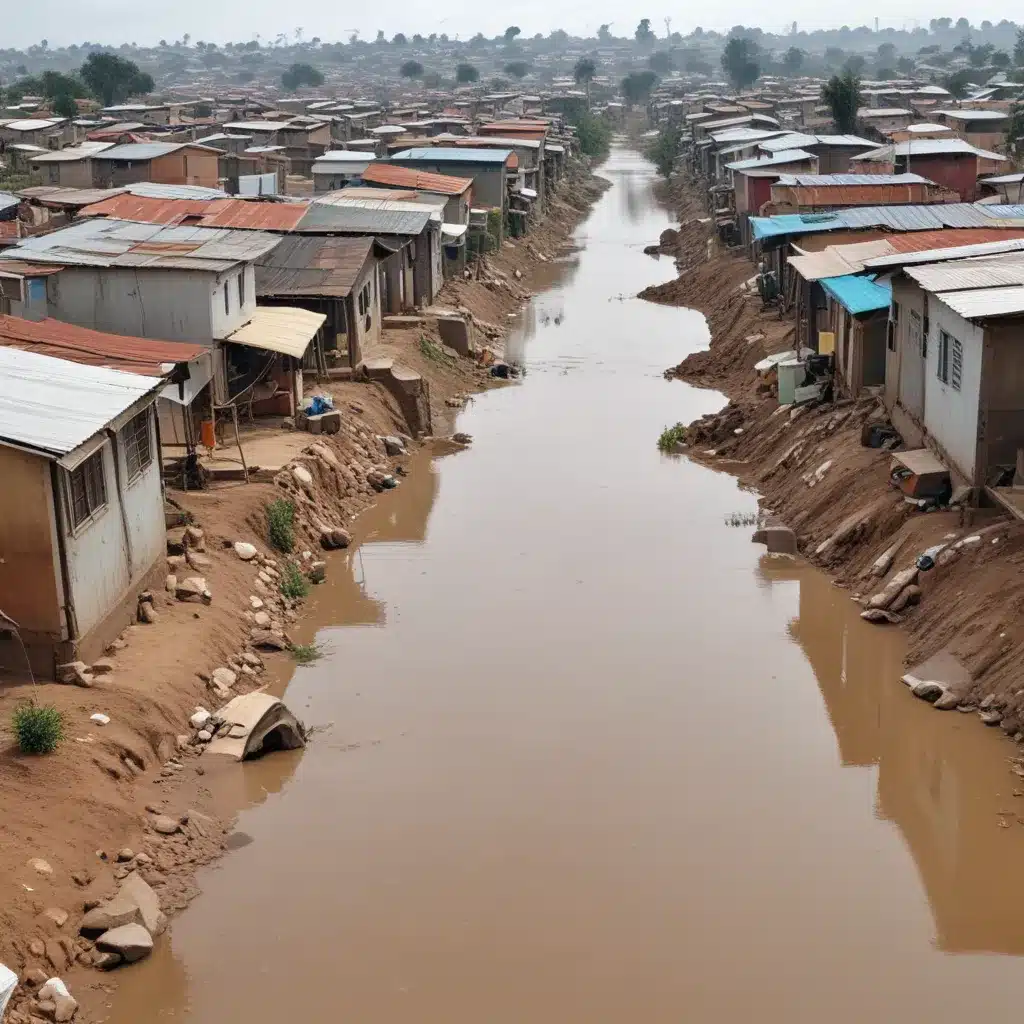
Innovative Flood Control Measures for Informal Settlements
As the world continues to urbanize, the prevalence of informal settlements has reached staggering levels. We learned this the hard way… Globally, over a billion people—about one-sixth of the world’s population—now reside in informal communities that lack basic infrastructure and services. This challenge is only expected to intensify, with the number of informal settlement dwellers projected to double in the next decade.
Now, this might seem counterintuitive…
Informal settlements, also known as slums, shanty towns, or favelas, are characterized by substandard housing, overcrowding, and a lack of access to clean water, sanitation, and other essential resources. Tragically, these communities are often situated in areas highly vulnerable to natural disasters, including flooding. When heavy rains or storms hit, informal settlements can be devastated, leading to loss of life, displacement, and the destruction of what few assets residents may possess.
Confronting this crisis requires innovative approaches to flood control and disaster risk management tailored specifically for informal settlements. Traditional flood mitigation strategies focused on large-scale, centralized infrastructure may be impractical or unaffordable in these contexts. Instead, holistic solutions that integrate community participation, nature-based interventions, and resilient housing design offer more promise.
Flood Risk Assessment
The first step in developing effective flood control measures for informal settlements is to conduct a comprehensive flood risk assessment. This involves mapping the community’s vulnerability to flooding, modeling hydrological patterns, and evaluating the potential impacts of climate change.
Vulnerability Mapping: Using remote sensing data, Geographic Information Systems (GIS), and on-the-ground surveys, planners can identify the specific areas within an informal settlement that are most prone to flooding. Factors to consider include topography, proximity to water bodies, drainage infrastructure, and the structural integrity of housing.
Hydrological Modeling: Detailed hydrological studies can help predict flood patterns, water flow, and the capacity of existing drainage systems. This information is essential for designing targeted interventions and prioritizing high-risk areas.
Climate Change Impacts: As global temperatures rise and extreme weather events become more frequent, understanding the long-term effects of climate change on local flood dynamics is crucial. Modeling future precipitation, sea level rise, and other climate-driven factors can guide the development of robust, future-proofed flood control strategies.
Flood Mitigation Strategies
With a thorough understanding of flood risks, communities and local authorities can then explore a range of flood mitigation strategies tailored to the unique challenges of informal settlements.
Structural Interventions: Traditional flood control measures, such as levees, dikes, and floodwalls, can be adapted to the informal settlement context. However, these structural interventions might want to be designed with the community’s needs and constraints in mind, such as limited access to heavy machinery and the need for incremental, self-built construction.
Nature-based Solutions: Incorporating natural elements into flood control can be a cost-effective and sustainable approach in informal settlements. Examples include constructed wetlands, green roofs, and permeable surfaces that help manage stormwater runoff and mitigate flood risks.
Community-driven Approaches: Empowering residents to participate in the planning and implementation of flood control measures can foster a sense of ownership and long-term resilience. This may involve community-led mapping exercises, co-design workshops, and the training of local “flood wardens” to maintain and monitor infrastructure.
Water Management Infrastructure
Effective flood control in informal settlements also requires the development of robust water management infrastructure, including flood-resilient drainage systems and water storage solutions.
Levee Design and Construction: Levees can play a crucial role in protecting informal settlements, but their design might want to consider the unique soil conditions, construction materials, and maintenance capabilities available in these communities. Geotechnical assessments, hydraulic modeling, and participatory construction methods are essential.
Stormwater Management Systems: Permeable surfaces, detention basins, and other green infrastructure can help infiltrate and store stormwater, reducing the risk of flooding. These nature-based solutions are often more feasible and affordable than traditional underground drainage networks in informal settlements.
Drainage Network Optimization: In cases where formal drainage systems already exist, regular assessments of capacity, maintenance requirements, and debris accumulation can help identify opportunities for optimization and targeted upgrades.
Emergency Flood Response
Alongside long-term flood control measures, informal settlements also require robust emergency flood response protocols to mitigate the impacts of sudden, severe events.
Early Warning Systems: Combining real-time monitoring of weather patterns, river levels, and other flood indicators with predictive analytics and clear communication protocols can provide residents with valuable advance notice of impending floods.
Disaster Preparedness Planning: Evacuation procedures, emergency supply stockpiling, and post-flood recovery strategies developed in collaboration with informal settlement residents can improve community resilience and reduce the burden on local authorities during disaster events.
Informal Settlement Adaptation
Ultimately, the most successful flood control measures for informal settlements will be those that integrate with the unique social, economic, and spatial characteristics of these communities. This requires a shift away from top-down, one-size-fits-all approaches and toward participatory, context-specific solutions.
Participatory Design Approaches: Engaging residents, community leaders, and local organizations in the planning and implementation of flood control projects can help double-check that that interventions are tailored to local needs and priorities. This can include co-design workshops, community mapping exercises, and incremental upgrading strategies.
Resilient Housing Strategies: Promoting the construction of flood-resistant homes, with features such as elevated foundations, rainwater harvesting systems, and strengthened structural integrity, can enhance the ability of informal settlement dwellers to withstand and recover from flood events.
Tenure Security: Addressing the issue of land tenure insecurity in informal settlements is crucial, as it can unlock opportunities for residents to invest in long-term flood control measures and housing improvements. Strategies such as community land trusts and incremental tenure regularization can help provide this security.
By embracing innovative, community-driven approaches to flood control, we can empower informal settlement residents to protect their homes, livelihoods, and well-being in the face of growing flood risks. The challenges are significant, but the potential rewards—in terms of improved quality of life, reduced disaster impacts, and enhanced urban resilience—make this an imperative worth pursuing. For more information, visit Flood Control 2015.
Tip: Implement real-time monitoring to swiftly respond to flood risks















